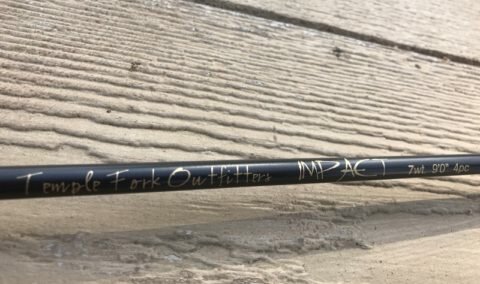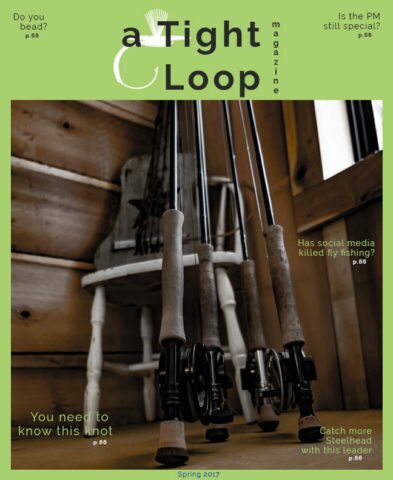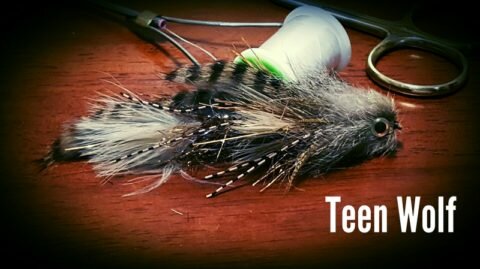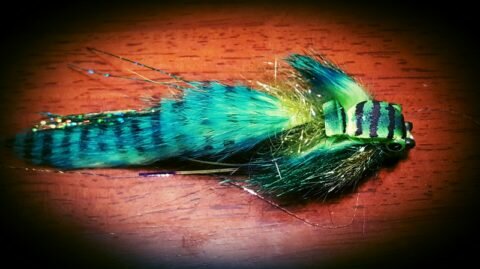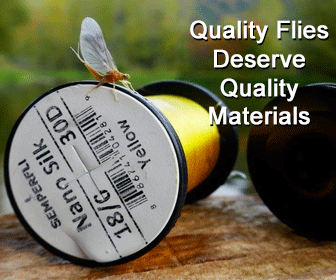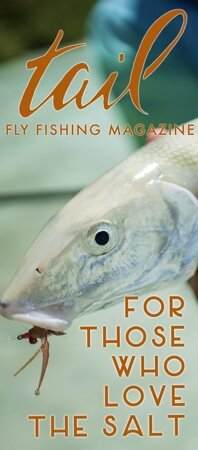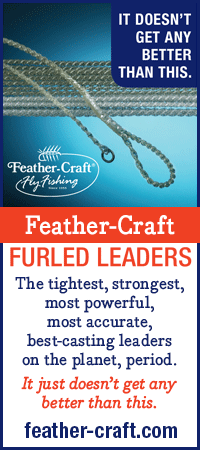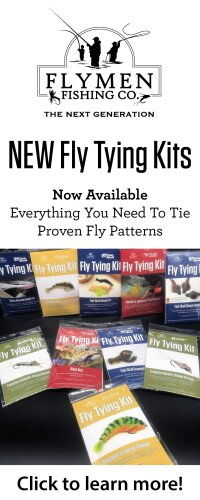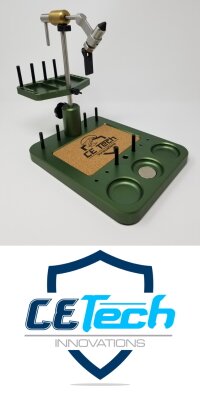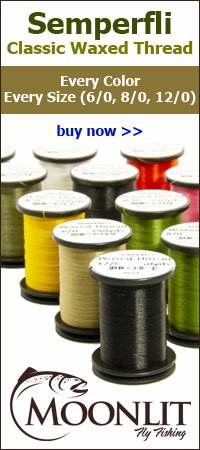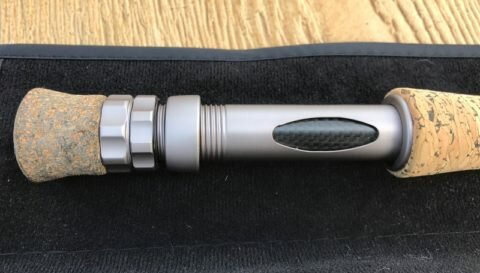
I recently had a chance to get my hands on the new Impact fly rod from Temple Fork Outfitters. I wasn’t quite sure what to expect. From what I read, part of this rod’s origin consisted of test rods being sent out to many casting and fishing experts, like Bob Clouser, Lefty Kreh, Flip Pallot, and Larry Dahlberg, to give you some examples. TFO then made adjustments to the rods according to the feedback they received. Granted, a fly rod is a personal preference and even the experts have their own preferences. However, it seems they were after something really special with this fly rod. So I was definitely excited to try one.
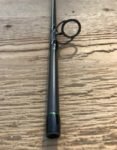 When I first took the butt section out of the sleeve, I noticed how light the rod felt, even if I was only holding one section. Then what attracted my attention was the modern looking reel seat and the emerald highlights around the thread wraps near the guides. It’s a very nice looking rod. NOTE: With a little research I noticed the larger sized rods have the modern looking reel seats and the smaller sized rods have rosewood inserts.
When I first took the butt section out of the sleeve, I noticed how light the rod felt, even if I was only holding one section. Then what attracted my attention was the modern looking reel seat and the emerald highlights around the thread wraps near the guides. It’s a very nice looking rod. NOTE: With a little research I noticed the larger sized rods have the modern looking reel seats and the smaller sized rods have rosewood inserts.
So I went out to test cast this new rod using a 250 grain sinking line with a single hook streamer tied on the end. Now, with the full rod in my hand, I could more closely feel how light weight this rod is. It felt great in my hand. With that first casting stroke, it felt effortless to cast. Having just fished with my 6wt Clouser rod, the softness of the Impact showed instantly. Of course, the Clouser is a stiff action rod after all.
I then tied on an articulated streamer with lead dumbbell eyes to see how it would throw something with some more weight. I have to say, more than any rod I’ve casted, even with the flexibility of the Impact, it had enough power to shoot the streamer extremely well. Usually when a rod has that kind of flexibility, I have to use the sling shot and flick of the wrist technique to wing the streamer out there. I didn’t have to do that with the Impact.
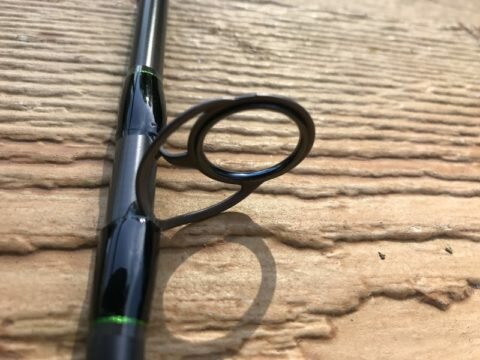
I spoke to Captain Austin Auducci and asked him to give me his opinion of the TFO Impact. Austin is the owner and head guide of Grab Your Fly Charters located in the Chicago area.
“I’ve used it as a streamer rod and also to throw top water flies like the BoogleBug. It performs well at both applications. It has the power to throw streamers and it provides a more delicate presentation when throwing top water flies. I do not hesitate to give them to my clients to use.”
What I plan to do in the future is grab a smaller weight Impact for a dedicated dry fly rod. I believe the Impact would make a terrific trout rod. Actually, Austin mentioned the same thing to me.
I’m starting to get the feeling the Impact would be good at many applications. I even read a post from a saltwater fisher stating how much he uses Impacts for salt.
The price point is a little higher than the other TFO rods, but not by much. One of the most attractive features that I love about TFO rods in general is that you get a quality rod at a good price. Even at this price, the Impact is still a bargain in my book.
I was completely happy using my Clouser and my BVK. To be honest, I wasn’t looking for another rod. But after casting the Impact, I plan to use this rod much more. I think it has the ability to become my go-to rod.
-Paul J. Beel
